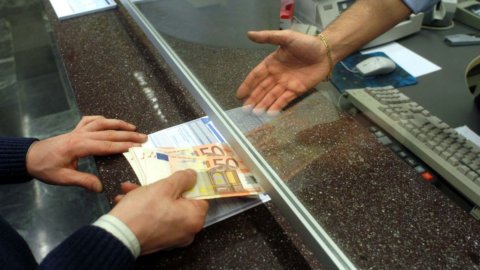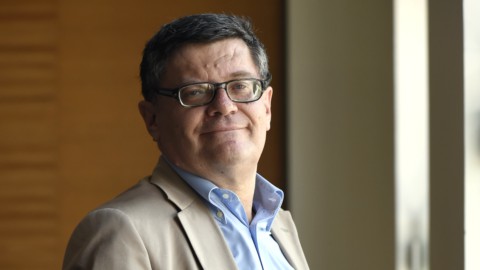The overall state of health of energy and environmental companies is improving, in Italy and in Europe. A key sector for the economy that is facing a transition-revolution phase that requires heavy investments in new energy models of renewables, intelligent distribution networks, electric mobility and new services linked to innovation. A sector in which energy efficiency is becoming, at a European level, a driving force for growth and an increasingly stringent challenge and such as to condition a large part of the spending plans of utilities and companies involved in the energy business.
These are the themes around which the Utilities Report 2018, elaborated by Agici Corporate Finance, the research and consultancy firm of which Andrea Gilardoni, a professor at Bocconi, is president and founder. “After years dominated by the collapse of consumption, by the contraction of margins and marked by an overall picture influenced by the crisis – explains Andrea Gilardoni to FIRSTonline on the eve of the presentation of the report which will take place on Thursday 1st March in Milan – we can say that the companies have managed to deal with the situation and that the general picture is improving or stopped the descent". On Thursday, during the presentation of the Agici Report in Milan, i press 2017: the one for Energy will be assigned to Alessandro Garrone and Luca Bettonte from Erg; the other, for i local public services, was won by Stefano Vnier of Hera. But the novelty of this year is the special recognition to Federico Testa di Enea for the relaunch of the Agency "as a public center of excellence for scientific and technological skills at the service of industry, institutions and consumers".
On the internal side, from 2018 Report of the M&A Utilities Observatory (Agici in collaboration with Accenture) the recovery of electricity consumption in 2017 is confirmed with a consequent increase in prices. While the electrical sector is undergoing a profound transformation towards a new model of production-transmission-distribution-consumption where renewable sources, energy efficiency and consumers themselves will have an increasingly central role, the gas sector experienced a year characterized by rising consumption and prices. Important news about the waste sector where separate waste collection increases and brings us closer to European standards and, after years of investment stagnation, the water sector: here the report speaks of a real "renaissance" with the recovery of investments driven by more favorable regulation, to the particular benefit of sewage and purification services.
A POWERFUL INVESTMENT CYCLE
“Precisely here is the most relevant aspect – continues Andrea Gilardoni – since both for the electricity and gas sector, and for the environmental sector of water and waste, we are faced with to the relevant problem of future investments. Energy utilities face a major investment cycle for the transition to a more decentralized energy model, the development of renewables and the impact of innovation. Important investments will be needed starting from the network and extending to other businesses. In the case of water, the water sector has been under-invested for years and is now starting up again to guarantee supplies - this is the case of the Peschiera aqueduct in Rome - but also to cope with the ongoing climate change. The need to invest in waste is given by differentiated waste, by the recovery technologies it requires to facilitate the process of closing landfills".
The top 5 multiutilities (A2A, Acea, Hera, Iren and Veritas) have planned investments of 11,2 billion over the next five years and made 1,5 billion overall in 2016. The net financial position/Ebitda ratio is low (from 2,5 .3,2 to 3,5) with average lending rates ranging from 2,99 to 56,2 percent. Among the energy companies, the lion's share in Italy – where the market is highly concentrated – is made by Enel and Eni who plan to invest overall 58,1 billion against the 95 billion planned by the sector. In the case of Enel, 6% of expenditure concerns regulated investments, therefore the grid. In water, Acea is outside the main groups for planned investments and 2,6 companies declare their intention to invest 2021 billion by 5. In waste, the top 1,5 utilities plan 40 billion compared to 2016 million spent in XNUMX.
ENERGY EFFICIENCY, GROWTH THROUGH ACQUISITIONS
The growth strategies of the various players deserve a separate chapter through alliances, mergers and acquisitions which recorded a total value of 7,8 billion with 86 transactions, 11 more than the previous year. “There are agreements and agreements – points out Andrea Gilardoni however – and many are of a commercial nature. Compared to the past, I don't see phenomena that are structurally of particular impact or such as to change the characteristics of the sector. Rather, the emergence of agreements aimed at energy efficiency and the acquisition of Esco is interesting, such as the recent acquisition of Toe by Snam. A2A and Terna have also recently announced agreements in this sector which has been gaining ground over the last year and a half”.
TRENDS IN EUROPE
If this is the Italian scenario, at the European level the trends are similar. The growth in electricity consumption was 0,6%, driven by weather conditions and the economic recovery. The push towards renewables concerns all the large groups with different nuances: in January 2017 Acciona produces completely green energy, Statoil on the contrary is almost completely powered by conventional sources, halfway there are Enel (55%) and E.on (25% ) about.
The “plunging” trend in the prices of storage batteries is confirmed, expected to fall to 73 dollars/kwh in 2030 from 642 dollars in 2012. In energy efficiency, we note the leadership of Engie and Edf, two French champions.





